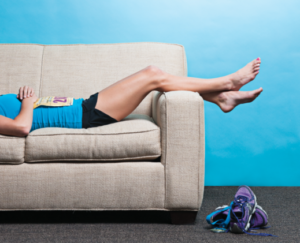Seven Ways To Recover Faster From Intense Runs
If you ever want to make it to the next level, you must push yourself during exercise. The harder and more  often you push, the easier it becomes. But physical toughness is a big part of mental toughness, and going beyond the physical breaking point almost always causes injury.
often you push, the easier it becomes. But physical toughness is a big part of mental toughness, and going beyond the physical breaking point almost always causes injury.
So, the best approach may be to extend your body’s physical tolerance, and here are some ways to do just that.
Hydration
Getting enough water is absolutely essential. If you’re a morning runner, guzzle at least eight ounces right after you roll out of bed. Chances are, you haven’t had anything to drink for at least eight or ten hours, and it takes a while for the body to fully absorb liquid. After that, sip on another eight-ounce glass as you get ready to head out.
During the day (and this may be a little ick), a good way to tell if you’re fully hydrated is to look at your urine. If it is bubbly or colored, regardless of the volume or how thirsty you feel, you are probably dehydrated.
Watch Your Shoes
After about 300 miles, most running shoes start to wear down, especially in the mid-sole area. If you run two miles a day five days a week, that means you need new shoes about once every nine months. Here are a few other signs:
- Sore knees and hips probably mean the shoe’s cushioning has worn down.
- Blisters, even in non-humid weather and while wearing moisture-wicking socks.
- If the shoe does not feel like part of your foot, it’s probably time to move on.
The bottom line is that you probably need to replace your shoes much more often than you would otherwise think.
Pre-Running Warm-Up
There is a vigorous back-and-forth debate as to whether it’s best to stretch before or after running. No matter which side you are affiliated with, it is hard to argue with knee circles, ankle rolls, and hip rotations. A few minutes of brisk walking and light jogging will help you warm up as well.
A warm-up is also important to ensure that you do not fatigue too quickly and are not excessively sore afterwards.
Cool Down
A three-minute light run and slightly more intense stretching greatly reduces soreness, because the light activity flushes lactic acid out of the body through the bloodstream. This cool down also serves as an excellent transition to your next event by reducing your heart and respiration rates.
Soaking Bath
Just like the before-or-after stretch debate, some people say hot baths are best while others insist on cold ones. They both have benefits. A hot bath helps muscles relax back into their normal shape; the Chinese believe that cold water stimulates the nerve endings then improves circulation. You could theoretically get the best of both worlds with a warm bath and an ice pack for runners, and that actually might be the best idea.
Leg Drains
Either right after the run or right after the bath, lie on your back and place your legs vertically against the wall for about three minutes. The blood drains out of your legs, so that when you get up, new, fresh blood flows into them. Most people notice a significant difference as soon as they stand up.
Refuel
One of your next two meals should have lots of protein to rebuild muscles. Also, include plenty of leafy greens to replenish lost vitamins and minerals. A grilled chicken salad with extra chicken for lunch might do nicely.
If you’re a runner, you are probably already mentally tough, at least to some extent. It is very important that your mind keep up with your body, and if you follow these tips, it probably will.



